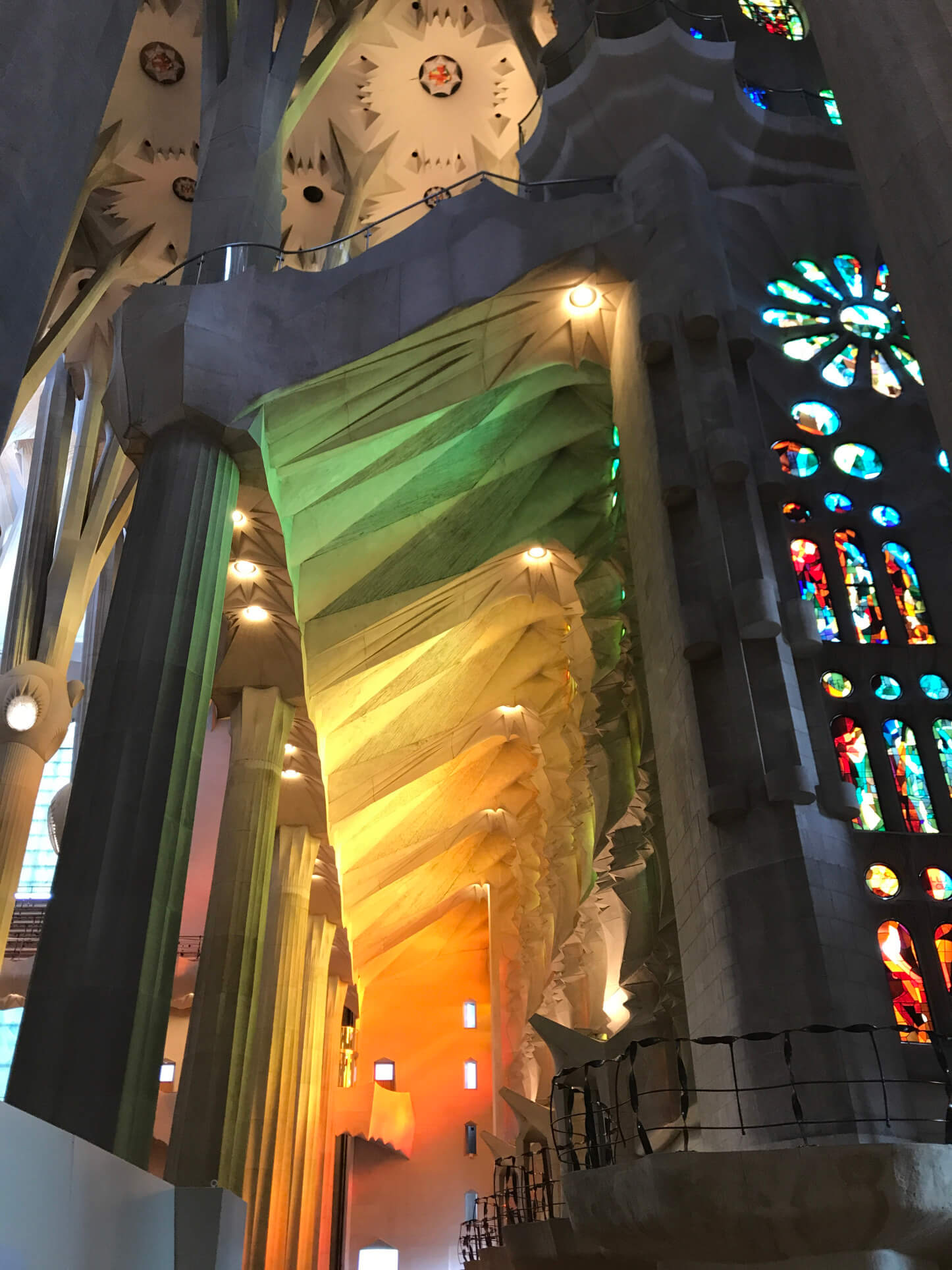
Photo credit Rhonda Curry
At this time of year, the Western World slows down, pauses for the Christmas Season.
We step off our hamster wheel of life and work, of things to do, deadlines to meet etc.
In that world, has anybody ever used the line “my client is not in a hurry”? If so, it is very rare, yet these words, and the man who said them, have much to teach us.
I love visiting houses of worship, there is so much power both in the focussed devotion given to these buildings and within them from those visiting them to focus on their own devotion to their faith.
In 2011 I visited Sagrada Familia. In her own visit, as she blogged about including the photo above, Rhonda Curry put the impact of the interior in exquisite words:
“The interior of the basilica is, in a word, transportive. I think a child would be best to describe its wonder. To me it felt as if all the constructs of what we know, what we think we know, what we hope for, and what is more beautiful than we even know how to hope for all came together in an emotional, physical and spiritual rush of light and love.”
Sagrada Familia is, to me, quite simply the greatest human-made building I have ever visited. The exterior is beyond words, yet the interior truly left me speechless and even motionless. I couldn’t walk, I had to stop, sit, and absorb.
Gaudi began work on this immense cathedral in 1883 and worked on it for 43 years until his death in 1926, at which point it was only around one-quarter complete.
When asked when it would be completed, he famously answered:
“my client is not in a hurry”
Sagrada Familia is still under construction, some 135 years since the inception of the process. I love that.
We live in a world where we seem to so often be in a hurry in so many ways.
Today I simply ask you to ponder the value of going slowly, as Gaudi did and left as his legacy. A few thoughts for you.
In yesterday’s post: “Happiness and Gratitude“, David Steindl-Rast gives us a method for living gratefully. Stop. Look. Go, just as if we were a child following instructions to cross a road. Of these three, his guidance is to focus on the first word. Stop.
Earlier this year I wrote: “Patience – “Whit’s fur ye’ll no go by ye””, a post also featuring this quote from Gaudi, as well as the Scots admonition I still use an anchor when I find myself feeling the need to go too fast:
“Whit’s fur ye’ll no go by ye”
This translates to “what’s for you will not go by you”, or if it is meant to be it will be, so don’t push for it to happen or happen faster than it needs to be.
In an article a few years ago on Gaudi, Jonathan Glancey wrote about the idea of “slow architecture”, where he wrote:
“Today, we build far too quickly for a number of banal reasons. A fast buck. An endemic and hysterical television makeover show mentality. A belief that getting things done quickly is a virtue. Management-led culture. A bullet-headed “On time, on budget” mentality. The dismal idea that rapid construction – of executive housing estates, unwanted supermarkets and other schlock – is a powerful economic lever that, when pulled, will kick a boot up the backside of a flagging economy.
Stop. Worthwhile architecture, whether a home or a cathedral, has its seasons. There is no ultimate need to hurry its making, while the very making of a building is just as important as its day-to-day use. An economy, meanwhile, can be boosted as much by having skilled craft workers shaping thoughtful buildings as it might by people shopping gormlessly in rushed-up shopping malls. Architecture – real, true and beautiful architecture in the service of our spirit and senses as well as our everyday needs – is the end result of contented producers rather than dissatisfied consumers.
Today, we treat architecture as if it was a throwaway consumer “good”. We should learn to slow down. Rome wasn’t built in a day, nor was St Peter’s. Even Barry and Pugin’s Palace of Westminster was 30 years in the making”
So, in this season of pausing, let us look to the value of stopping and going slowly. Imagine how we might act if we, for a moment, lived by Gaudi’s maxim ?:
“my client is not in a hurry”
